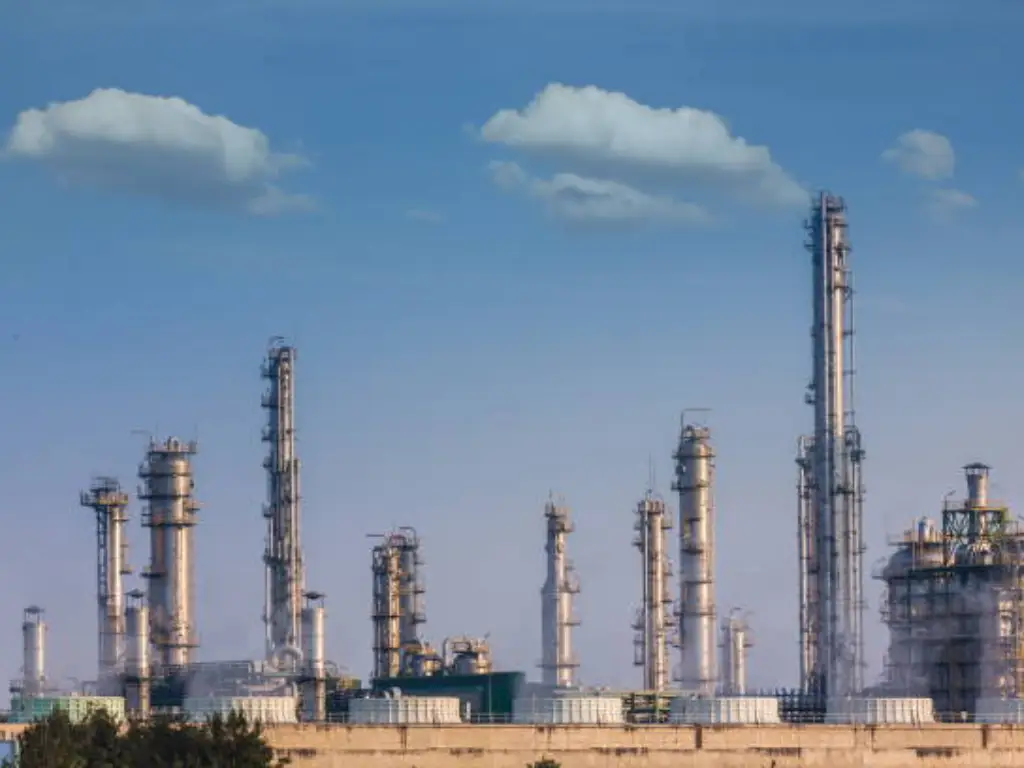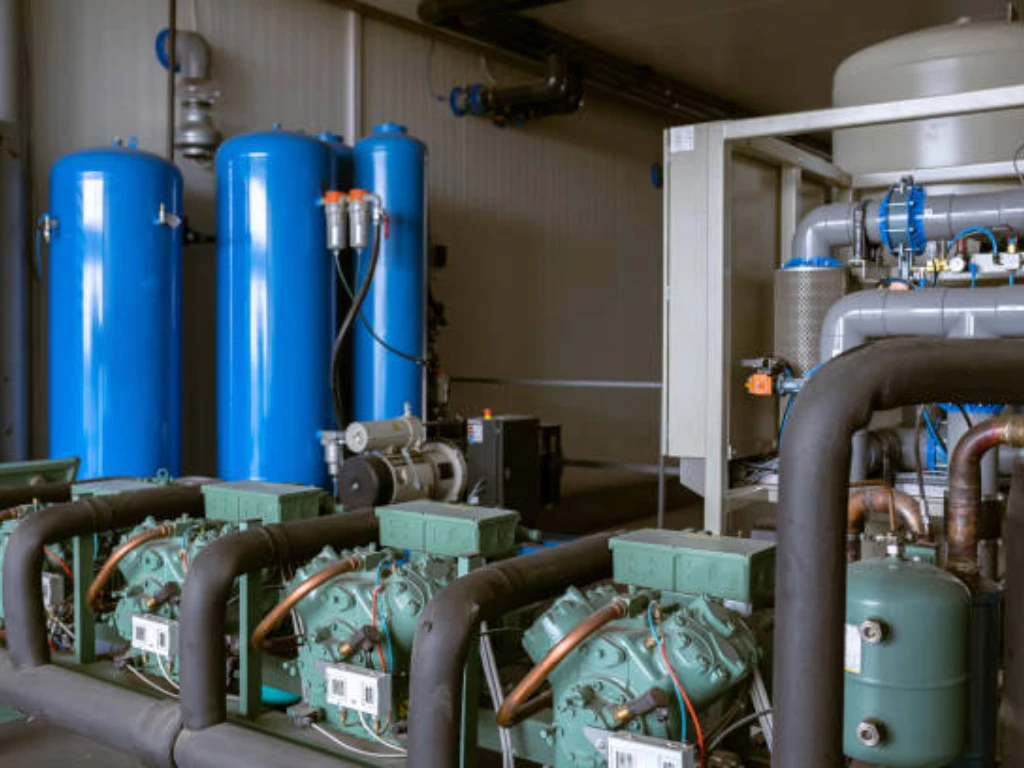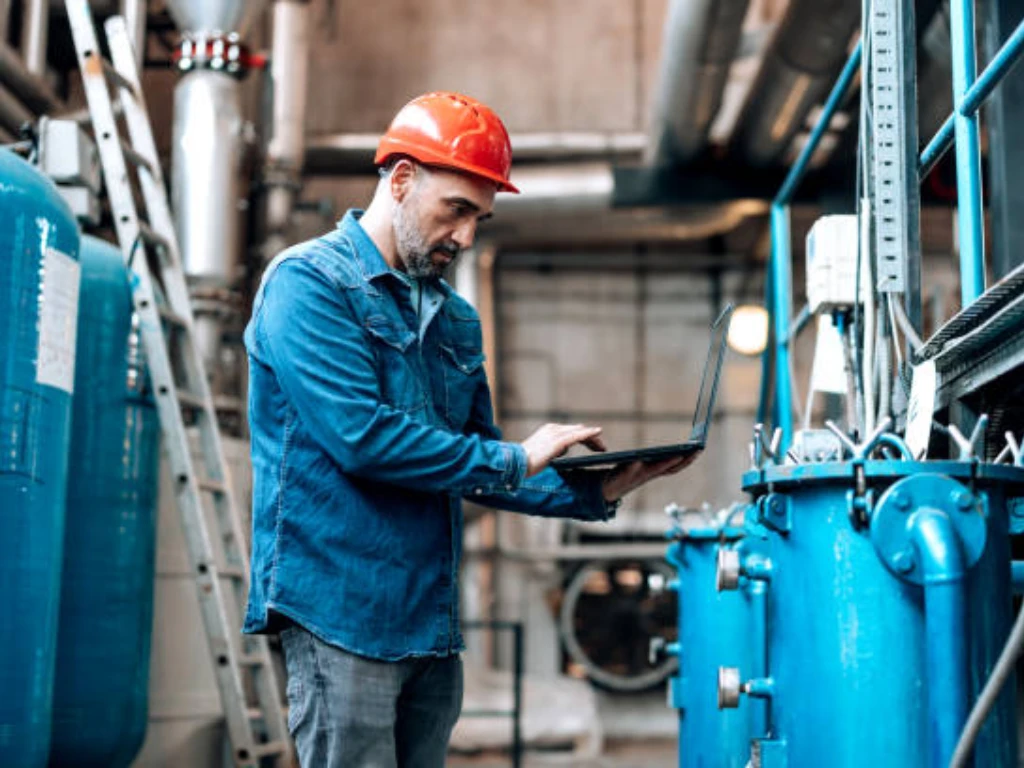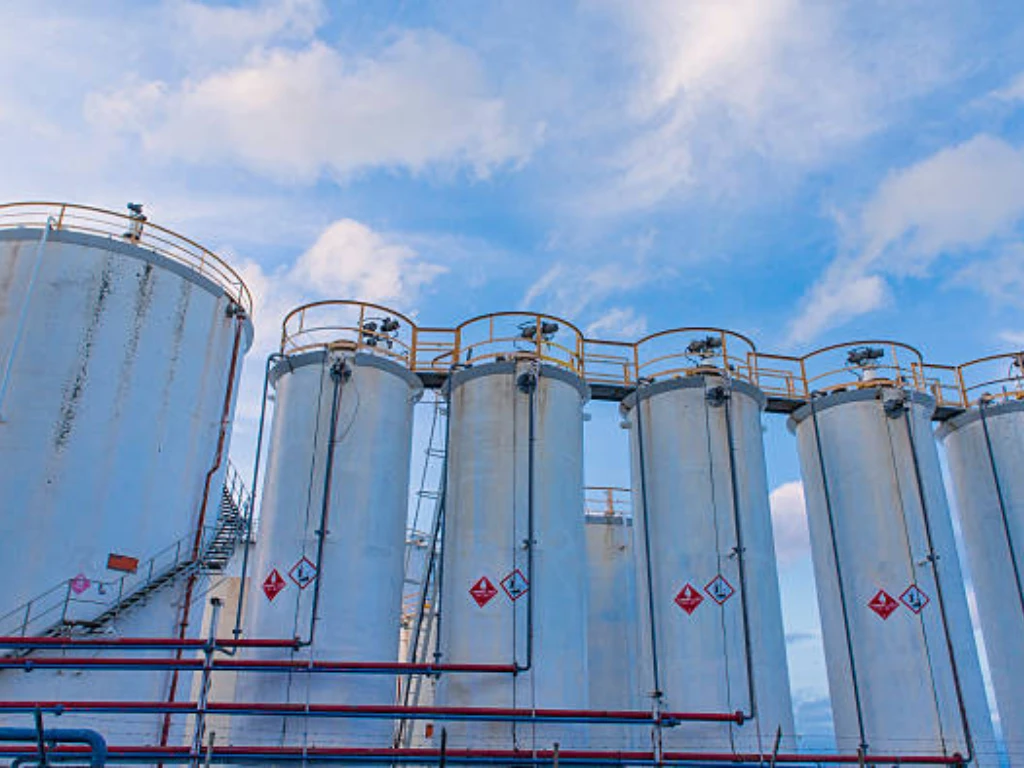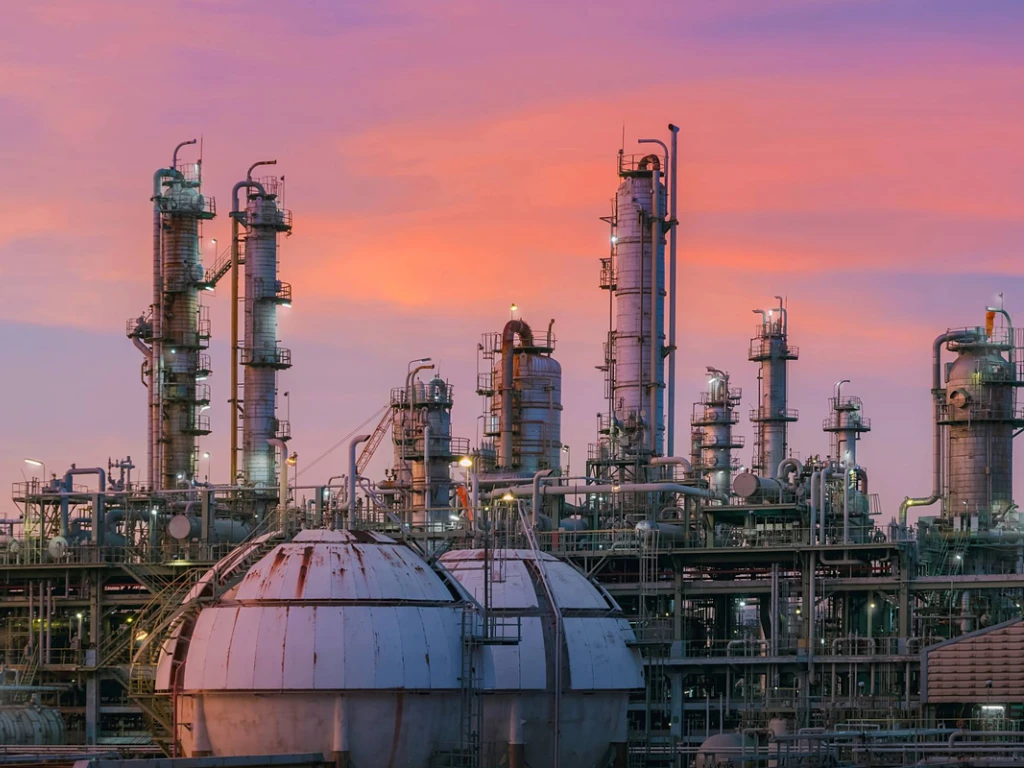This desiccant’s main functions, termed as ‘adsorption,’ are to absorb water and dry air. Moisture molecules in the air can induce corrosion in machinery and the formation of ice, both of which are dangerous and damaging. As a consequence, it’s vital to remove these molecules so that the gear and equipment may continue to function normally.
The production of alumina is a rather simple process. Now, if you want to manufacture activated alumina at your facility, we’re sure there are a few things we should let you know about so you’re fully prepared. Let’s get down to business!
What is activated alumina?

Activated alumina is a substance you may or may not have heard of. Activated alumina, on the other hand, has most probably benefited you and your family. It might even be hidden in the water filter in your faucet.
Activated alumina is an excellent desiccant for drying a wide variety of liquids and gases. Aluminum oxide in the form of very permeable spheres that have been microscopically “squished” is known as activated alumina. As an outcome, they can perform a wide range of jobs. They can, for example, be used with dry gasses. The safe transmission of volatile gasses frequently necessitates the drying of gasses. Propane, for instance, must be dried before use to prevent rusting of machinery, which might also result in major leaks.
Common Applications of Activated Alumina
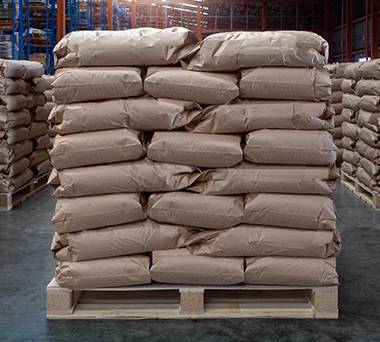
As a consequence, activated alumina is exceptionally good at reclaiming toxic wastes and polluted rainwater streams. Pollutants from production activity, such as soluble metals, can gather in rainwater. It can also wash contaminants like arsenic and lead into groundwater as a result of mining operations. Activated alumina can be used to clean up not only hazardous mishaps but also toxic regions that have been abandoned for a longer period and are only now being mopped up.
Activated alumina is an economical way to clean up the surroundings. It guarantees that dangerous substances do not infiltrate back into the surrounding area after being discarded due to their proclivity to bind with them.
The fact that activated alumina is exceptionally stable is an important characteristic. It may create bonds with a variety of substances without changing their chemistry or structure. Because of its permeable structure, its surface area is substantially greater than its mass, permitting it to ingest a considerable amount of substances.
Activated alumina is also a good dehumidifier, which means it can remove moisture from ambient conditions and other gasses. It is used for dryness and lustration in the manufacture of hydrogen peroxide, natural gas, and gasoline.
It’s also used to cleanse water in factories, sewage treatment plants, and residential homes. Fluoride, lead, arsenic, and other contaminants are all efficiently removed from drinkable water.
Due to its excellent crash tolerance, pore capacity, and chemical and physical resilience, activated alumina is one of the most important and helpful materials in today’s high-tech world.
Adsorbents
As an extremely effective adsorbent in both gas and liquid uses, activated alumina is used by a variety of industries to remove certain constituents from other mediums.
Activated alumina is best recognized as an adsorbent for its usage in water filtration, in which it is economical adsorption for eliminating fluoride from water. It can also remove a number of other impurities, such as arsenic, lead, and sulfur.
Desiccants
Indistinguishable to its action as an adsorbent, activated alumina can also absorb water from the air, making it a desiccant; activated alumina, like silica gel, may catch and trap water to keep materials dry. At a humidity level of 50 percent, activated alumina can absorb up to 20percent of its own mass in water as a desiccant.
Desiccants like activated alumina are used in a range of uses, including removing vapor from gasses in factory settings. Water adsorbed on activated alumina can be desorbed and the alumina recycled after thermal treatments.
Catalysts
Activated alumina is also frequently employed as a catalyst, serving as both a catalyst and an inert transporter or substrate for other catalysts.
Activated alumina is best known as a Claus catalyst, and it is the most widely employed Claus catalyst in sulfur extraction at oil and gas plants.
Activated Alumina Features and Benefits
- Reduced attrition implies less sifting during column uncompression or loading, as well as a reduced pressure decrease and a reduced likelihood of after-filter blockage.
- The use of activated alumina sheets in regenerative drying procedures has a longstanding experience.
- The uniform bead dimension of Activated Alumina ensures a low-pressure fall, reducing channelling and allowing the full bed column portion to be used.
- To reduce dust formation, high crush robustness desiccant should be used in dryer towers. This property enables activated alumina to be used as a pre-bed ingredient when other types of the dehumidifier are needed.
- Activated alumina doesn’t wilt, swell, soften, or disintegrate when immersed in water. Water stagnation has no effect on the alumina beads. The desiccant’s significant adsorption capacity can be regained after a complete refurbishment.
Machine and Materials Needed
- 1000°C temperature
- The pressure of 0.3 MPa
- AlCl3
- Water
- Tube Furnace
- Nitrogen
- Reactors
- Flow Control Valves
- Alumina Chloride
Manufacturing of Activated Alumina
- Production of Aluminum Hydroxide
- Alumina Calcination
- Alumina Agglomeration
- Testing
Production of Aluminium Hydroxide
Throughout most instances, activated alumina begins as aluminum hydroxide (gibbsite, boehmite, etc.) — a substance formed by a sequence of chemical reactions during the Bayer procedure, which converts bauxite ore to alumina.
Activate Alumina Calcination
The aluminium hydroxide is then thermally processed in a rotary kiln once it has been created. This calcination stage is applied to dehydration or removing bound moisture from aluminium hydroxide, in order to form alumina or aluminium oxide.
The alumina framework becomes very permeable during activation, which happens within a defined temp range, with procedure parameters such as dwell time and temp profile utilized to influence the finished product’s qualities. The features of the ultimate product might also be influenced by the composition of the initial bauxite origin.
Activated Alumina Agglomeration
Agglomeration is typically desired based on the activated alumina’s desired final application. When dealing with adsorbents and catalysts, this is particularly true.
The agglomeration of activated alumina provides for a great level of customisation to meet the needs of unique applications. Agglomeration is frequently used to regulate the following attributes:
- Dimensions distribution of particles
- Density in bulk
- Fracture resistance
- Quantity of attrition/dust generation Capacity
- Fluid Ability
There are a variety of methods for making activated alumina “beads,” including using an agglomerator, pin mixers, disc pelletizer, or a mixture of these methods.
Activated Alumina Testing

Testing is typically a vital step in the development of an activated alumina output that works as expected for a variety of purposes. Batch and pilot-scale kilns are frequently used to test the thermal procedural components of activated alumina manufacturing. Furthermore, testing various agglomeration techniques as well as prospective binders is frequently suggested in order to acquire the process data needed to develop an agglomerate with the desired features.
Jalon provides a testing facility where batches and pilot-scale thermal and agglomeration tests can be done. Testing of continuous procedure loops integrating thermal and agglomeration is also possible. This one-of-a-kind testing environment enables the collection of procedure and material data, as well as the simulation of manufacturing circumstances, in order to develop a procedure that will generate a product that is suitable for the intended purpose.
Thermodynamic evaluation of activated alumina outcome at various temps
At the crystal face, the principal diffraction patterns of typical Al2O3 occur. The distinctive peaks of Al2O3 emerge at the crystal faces when the pyrolysis temps of the AlCl3 crystal reach 900°C. This is due to the alumina’s crystal stage transition temps of 900°C. Because Al2O3 is the primary stage of activated alumina, the pyrolysis temps should be less than 1000°C.
The activated alumina has a lamellar form when sintering at 700°C, but the results at other temps have a granule structure. The solid reagents precipitate from the liquid state initially, then are converted into round granules in the spray pyrolysis procedure. The pyrolysis outputs become uneven as the temp rises, resulting in rough exteriors. The creation of the lamellar structure, on the other hand, is not noticed. These findings show that sintering at higher temperatures transforms the final architecture from lamellar to uneven with uneven surfaces.
Below different temps, the products’ particular surface areas range from 94 to 52.4 m2/g, pore diameters from 12.12 to 17.78 nm, and pore volumes from 0.2655 to 0.2128 cm3/g. As the pyrolysis temps rise, the particular surface areas of the alumina byproducts diminish, which is congruent with the SEM data. The particular surface areas of the outputs in the spray pyrolysis procedure are less than those of typically activated alumina (>100 m2/g) because of the particular features of AlCl3 and the restricted liquid surface pressure. The results’ particular surface areas, pore diameters, and pore volumes fulfil the catalyst carrier’s demands of high purity Al2O3, large pore dimensions, and large pore volume (>0.1 cm3/g).
The Specific Surface Area Profiler was used to analyze the N2 adsorption-desorption isotherms of the pyrolysis outputs’ at 700°C and 900°C. When the absolute pressure surpasses 0.5, the pyrolysis outputs’ adsorption volume quickly increases. Since the capillary condensation, adsorption isotherm, and desorption isotherm do not overlap, a substantial hysteresis cycle arises. The isotherm line falls into the fourth category of BDDT’s categorization of adsorption-desorption isotherms. The findings reveal that micropores and mesopores are evenly issued throughout the pyrolysis output’ granules.
Furthermore, as per deBoer’s categorization of the hysteresis cycle, when the comparative pressure is 0.9, the hysteresis velocity of the desorption breakaways greatly, and when the relative pressure is 0.5, the hysteresis velocity of the desorption line changes remarkably. Distinct hysteresis loops can be found in two pyrolysis outputs. The hysteresis cycle of the spray pyrolysis output produced at 700°C is thus characterized as a hysteresis loop type Hydrogen with ink bottle-shaped and parallel-plate holes, which is consistent with the SEM findings.
At 900°C, the item’s hysteresis cycle is characterized as type H3, which is connected with slit-shaped apertures. The output also reveals that when the temp rises, the spray pyrolysis method improves the specific surface area of the activated alumina and increases the pore size. These results show that the proposed approach for producing large-pore-size activated alumina adsorbents is viable.
Regenerating Activated Alumina
In the drying of activated alumina, regeneration of active alumina is necessary. Hot nitrogen is typically used to purge desiccant renewal. Due to the strong interaction between water and activated alumina, several conventional procedures fail to completely desorb the adsorbed liquid. The heating and desorption procedures are divided into three phases: heating, cleaning and cooling.
The higher the heating temperature, the more extensive the desorption regeneration. The temps range from 180 to 350 degrees Celsius for activated alumina heating restoration. For 4 hours, the temp of the activated alumina column is normally raised to 280 degrees Celsius. The temperature is rising at a rate of about 50 degrees Celsius every hour.
Due to a high concentration of water vapor at high temperatures can dramatically degrade the framework of activated alumina, the active alumina bed must be washed with nitrogen, air, product gas, or another appropriate gas whilst it is being heated.
Water must not be incorporated in the flushing gas because the amount of moisture in it has a significant impact on the regeneration efficacy. After the active alumina bed has been regenerated, it should be refrigerated before the adsorption method, with the cooling gas being used to clean the bed and eliminate retaining water, and the chill gas and sorption cycle flowing in the same path.
When activated alumina is used to regenerate dry liquids like propylene, it is necessary to circulate the liquid via the active alumina bed without any dead ends. Consequently, when heated, the residual liquid would react or carburise, limiting the efficacy and functioning life of the adsorption loop.
If the activated alumina is of good quality, the life of the material will be extended. Desiccant regeneration, no matter how horrible or amazing it is, should be utilized in future uses. The effectiveness of high-quality activated alumina, on the other hand, may extend the life and improve the drying conditions.
What is the Purpose of Activated Alumina Regeneration?
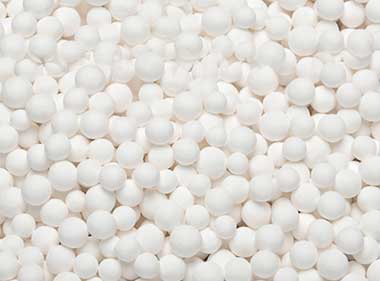
The fluoride maximum adsorption capacity of Activated Alumina is influenced by the physical and chemical properties of alumina, as well as the water to be filtered. After a duration of time, activated alumina gets concentrated with fluoride ions and decreases its authority to eliminate fluoride ions from water. This degree of Activated Alumina is known as “Exhausted Activated Alumina.”
Users have two options open to them. Replace the old Activated Alumina with a new one. You can also replenish any Activated Alumina that has been depleted. Since regeneration expenses are 1/15th as much as replacing an exhausted Activated Alumina with a newer one, it is a cost-effective option and the better one to choose as it reduces the overall operation expenses, and the time needed to wait for a new one to arrive.
Requirements

- Chemical
- Sodium Hydroxide:- also known as commercial-grade caustic soda
- Commercial Grade concentrated sulphuric acid
- Lime
- Weak Base(commonly known as baking soda)
- Weak Acid(Acetic Acid)
- YES/NO fluoride testing kick with reagent
- Equipment
- Balancing Scale
- Other Essentials
- Plastic Bucket with Graduations
- Plastic Container(200L)
- pH Strip(range of 2-10.5)
- Plastic Measuring Cylinder(100ML(2), 1000ML(2))
- Rubber Gloves
- Rubber Apron
- Plastic Rod
- Goggles
The Regeneration Methodology:
Alt-Text:Sticky Notes on Board
- Load the nylon bag with the exact quantity of AA from the household filter that has been drained (mesh size 0.106 mm). Ensure there is no spillage during the transport of Activated Alumina.
- With rubber gloves, crush 100g of caustic soda granules in a plastic plate or bottle.
- In 10 liters of water, gently dissolve caustic soda. Mix the flakes with a plastic rod to dissolve them. The alkali mixture that results is 1 percent NaOH.
- Tie the nylon sack around the tired AA’s neck. Place the nylon bag in the bucket with the weakened caustic soda (NaOH) mixture. Swirl the bag in the bucket every 2 hours to ensure that the caustic soda solution and the depleted Activated Alumina are in touch. After 8 hours, remove the bag from the barrel and drain any remaining alkali into the pail. It’s worth mentioning that the caustic soda combination only needs to be used once to cure 5 kg of AA.
- Half-fill the settling tank with the caustic soda solution from the barrel that has been used.
- Insert the nylon bag into a plastic barrel filled with 10 liters of clean water. This is the point at which the washing procedure starts. Bounce the nylon bag vertically and horizontally a few times, as directed in step 4. Repeat the washing procedure at least twice further, each time using new water. Raw fluoride-containing water can be used for this cleansing stage.
- Wearing gloves, transfer 100mL concentrated sulphuric acid from the acid vessel to a measuring cylinder. Slowly pour the acid into a 15-liter plastic bucket that has been filled with 10 liters of water. When adding acid, use a plastic rod to stir the water. The acidic combination obtained is 0.4 N sulphuric acid (H2SO4). Never use water while working with acids. It has the ability to cause a big accident.
- Prior to transferring the activated alumina-filled nylon bag to the acid solution-filled bucket, adsorb any excess water. Slide the Activated Alumina in the nylon bag vertically and horizontally as directed in step 4 above to ensure good contact with the acid solution. After 4 hours, lift the bag and throw away any excess acid, preferable overnight.
Things to Look Out for When Regenerating Activated Aluminas
When operating with caustic soda and acid, special care must be used. If you do not take the necessary precautions, you and others may suffer significant injuries. To avoid injury, strictly adhere to the measures listed below:
- Chemicals should be kept out of the reach of children and in a safe place, such as a sealed pantry.
- When transporting the bottles, extreme caution is essential. If you hold the bottle by the neck, it may fracture, culminating in a terrible tragedy. Grab the bottle’s base with both hands. Normalize using a bottle transporter, such as a bucket, to transfer a bottle from the storage cabinet to the workspace. Take advantage of easy-to-handle containers that are compact.
- When caustic soda contains moisture, it loses its effectiveness. As a consequence, the caustic soda bottle must be tightly capped.
- Always wear rubber gloves and goggles when dealing with acids or alkalis.
Manufacturing Tips
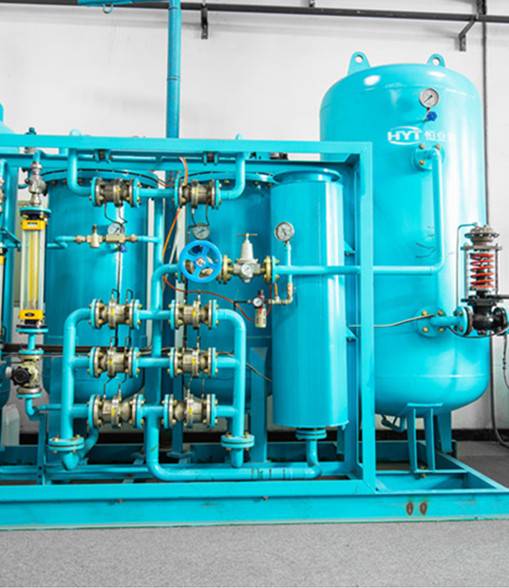
1. Detailed Evaluation
Another item to consider before launching the facility is a comprehensive assessment. You should have a good idea of how much money you’ll be spending on inventory management and supply. You should also know how many employees you’ll need to run the plant efficiently. You must be aware of your costs in order to effectively manage them.
The manufacture of activated alumina requires experts to work on the entire production process.
2. Prioritization of Return on Investment
When it comes to establishing a manufacturing facility, you must be extremely clear about what you’re ready to invest in and what you want the firm to bring in. Prior to you moving any further, ensure that the return on investment is your top priority.
Interestingly, numerous investors put off performing a complete audit for years since they believe it is too time-consuming. Get rid of such thoughts and concentrate on getting the numbers right. You should also conduct research into areas that require development in order to boost the entire return on investment.
3. Utilize Advancement Suggestions for Your Staff
Following the launch of your plant, you’ll need to make several adjustments over time. It can be difficult to come up with new ideas on your own. Nevertheless, by involving your staff in the procedure, you can make it go more smoothly. Have a brainstorming strategy meeting with your coworkers, and you’ll be astonished at how useful they can be. In fact, most employees enjoy participating in such activities since they allow them to contribute to the firm in a special manner.
4. Invest in Automation
We live in the information age wherein almost everything can be mechanized and controlled by machines. You can always do some study to see what kind of machinery would be most beneficial to your company’s efficiency. Take into account automating repetitive jobs to save money on payroll.
5. Bargain with Cargo Carriers and Vendors to Get the Best Price Possible
When you contact a cargo carriers business to assist you with transporting your products, they will offer you a cost that you must not embrace without a little haggling. Always keep in mind that you are both in commerce, and it is up to you to contend with a contract that benefits both of you. It’s also a good idea to do the same with your vendors. Demonstrate that you value your business as well by refusing to take the pricing at face value.
The Bottom line
So there you have it, you’re all set to make your activated Alumina. Speaking of which, if you find the entire procedure intimidating, you have the option of hiring industry-experts Jalon to help you. This is our area of expertise. Contact us and we are confident that we will be able to meet your adsorbent and activated alumina requirements.

